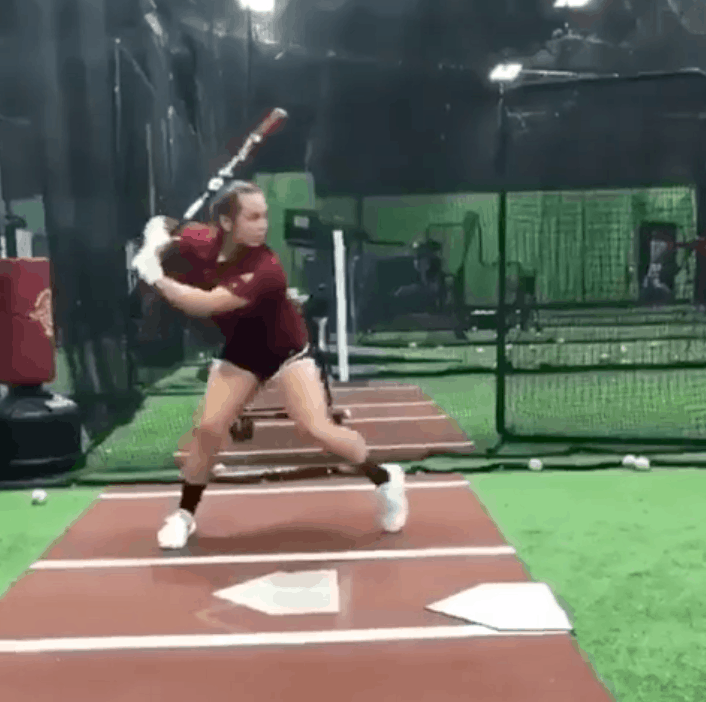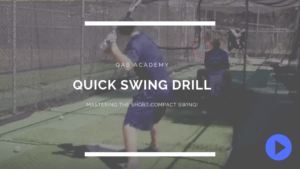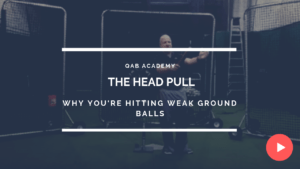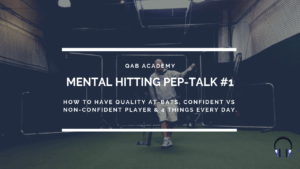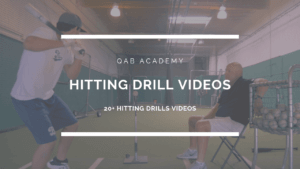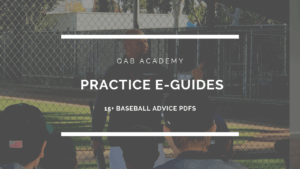I believe there’s VERY little if any difference in a softball swing/approach compared to the baseball swing. Hitting is hitting, whether softball or baseball. Period.
I hope this fastpitch softball mental hitting tip proves it.
Great swing here. Slow feet, fast hands, quiet head w/ controlled violence. @tag a softball player who swings with controlled violence.
I get the question all the time, what's my philosophy on mechanics?
Here it is.
Fastpitch Softball MENTAL Hitting Tips - Mechanics
Hitting is slow feet, fast hands, quiet head taking a controlled violent swing on a pitch I'm looking for.
That's my mechanics in a nut-shell. Know if you REALLY want to talk hitting, let's talk about the approach and the mind.
If I can get hitters to do four things every, single at-bat, here's what they would be.
Fastpitch Softball MENTAL Hitting Tips - Approach
1. Walk up to the plate w/ 100% confidence.
2. Have an attainable goal to hit the ball hard. If you hit it hard, YOU WIN, if you get a hit, it's a bonus, so get rid of the batting average.
3. Attack the inner half of the ball w/ a tall back-side.
4. Help your team win.
If you want to learn how to play w/ more calmness, toughness and focus and less tension, pressure, and anxiety then learn, practice and master the mental and approach side to hitting.
You do this by changing what you think success is from the batting average to having Quality At-Bats.
Softball Hitting Tips
If you want to be an elite softball hitter, you have to put in the work. Developing routines and following proper hitting drills are the surest ways to improve your hitting. In this guide, you’ll learn tips for bat speed, generating power, mental toughness – and common hitting tips that don’t work.
Softball Hitting Routines and Drills
A great daily hitting routine you can try is the 60-swing routine from Team New Jersey Fastpitch Softball. For every series of 5 or 10 swings off a tee, you focus on a different part of your swing. Some variations are swinging smoothly, with top or bottom hand only, or setting the ball up in different locations. This kind of training gets you reps as well as helps you understand your swing better.
Bat Speed
A quick bat is a more powerful bat. With a short swing, hitters can generate more power. If you want to tighten up your swing, you should focus on your stance and your hands.
You want your stance to be square, with both feet the same distance from home plate. If your stance is closed – your front foot closer to the plate than your back foot – your swing slows down. With a closed stance, your bat is further away from the ball when it crosses the plate.
Your hands also factor into bat speed. You should keep your hands in front of the barrel of the bat. If not, it could lead to dropping your hands or casting – which slow your swing down. You should also keep your elbows down through your swing, as it reduces the amount of time it takes you to make contact with the ball.
The Knob Punch Drill
The knob punch drill will help speed up your hands. Set up a tee in front of your front foot, on the edge of the batter’s box. Raise it so it’s just below the level of your hands. Take the knob of the bat and hit the ball with it. This drill teaches you to keep your hands in front of the barrel of the bat.
Bat Power
Generating more power comes from developing a quicker bat. So if you want a more powerful swing, focus on the above tips about your stance and hands. There are few other tips to consider when it comes to power hitting, though.
You’re already squaring your stance for greater bat speed. You should also focus on balance and weight transfer if you want more power. With an even stance, you can more easily draw power from your legs and core, rather than your arms alone. As the pitch comes in, you should shift your weight to your back leg. When the pitcher puts her front foot down, so should you, by shifting weight to the front foot.
A powerful swing also comes from a good grip. You don’t want it too tight or too loose. You’ll have to experiment to determine the best grip for you. With a relaxed grip, you can generate more power with your swing.
The Weight Transfer Drill
To practice even weight distribution during your swing, place a bucket behind your back leg when you hit from a tee. The bucket will prevent you from “squashing the bug” – an inaccurate hitting tip coaches often give players. When you do this drill correctly, you’ll finish your swing with your back foot away from the bucket, your hips rotated forward, and your back to the catcher. You can read a full breakdown of this drill from The Hitting Vault.
Get into the Hitting Mindset
Hitting is mental as much as it is physical. You need solid mechanics but you also need mental toughness. A mental hitting routine, goal setting, and patience will go a long way.
The best way to train your brain at the plate is by devising a routine and sticking to it. Your routine could be anything: taking a deep breath before stepping into the batter’s box, pausing to visualize yourself getting a hit, or repeating affirmations while you’re on deck. Find a mental routine that puts you at ease and go through it each time.
Maybe one of your mental routines is setting a goal. Before you come up to the plate, you should have a plan in mind. Study the pitcher so you know what to expect. Take a look at the infield as well, and check for gaps. Being strategic and planning your plate appearance could help calm your nerves, too.
Hitters also need patience. Patience allows you to put your trust in your skills and build confidence at the plate. You also need patience to pick out the right pitch.
Popular Hitting Tips that Don’t Work
Former Division II softball player and coach Courtney Hudson explained three common softball hitting tips that aren’t effective: “squashing the bug”, one-armed swings, and swinging level.
Squash the bug
An age-old tip coaches have been giving hitters is to “squash the bug.” It means to turn your back foot during your swing, as if you’re squashing a bug with your toe. This tip has been debunked, though. It causes players to put too much weight on their back leg, to lose power, to have reduced bat control and reduced bat speed. The point of squashing the bug is for the hitter to rotate her hips, so tips about driving off the back leg or turning the front thigh toward the pitcher work better.
One-armed swings
Another drill that creates problems for younger hitters is the one-arm swinging drill with the front hand, and variations on it. Older hitters, around high school and college-age, have good enough swings to do this drill without problems. But in younger hitters, it can reduce bat control or force batters to start swinging early. Instead, tell hitters to focus on having a strong back hand, and the front hand will find its place.
Swinging level
Finally, coaches often tell their hitters to swing level. According to Hudson, this tip might help girls make contact with the ball, but prevents them from hitting for power. Swinging level also doesn’t put any spin on the ball. Instead, hitters should aim for the top third of the ball, which produces fewer pop-ups and more hard ground balls.
Final Thoughts on Softball Hitting Tips
Nobody becomes a great hitter overnight. It takes consistent practice and a conscious effort to improve. By putting the work in, you can develop a deeper understanding of your strengths and weaknesses as a hitter. Once you’ve done that, build upon your skills and reach the elite hitting level you’re aiming for.
Compete w/ Confidence.
If you've read this far and you know a softball player who is great in practice but sometimes struggles in the game, let me be her mental hitting coach.
🔥🏆 If you use coupon code FASTPITCH37 , I will send you every single course in my Quality At-Bats bundle (Normally $130) for $37.
Grab offer @ qualityatbats.com
If you love your abilities but your abilities aren't showing up, it's not your abilities fault.
If you enjoyed this softball hitting mental hitting tip, let's get your mind right.
🔥🏆Use Code: FASTPITCH37
Grab offer @ qualityatbats.com
